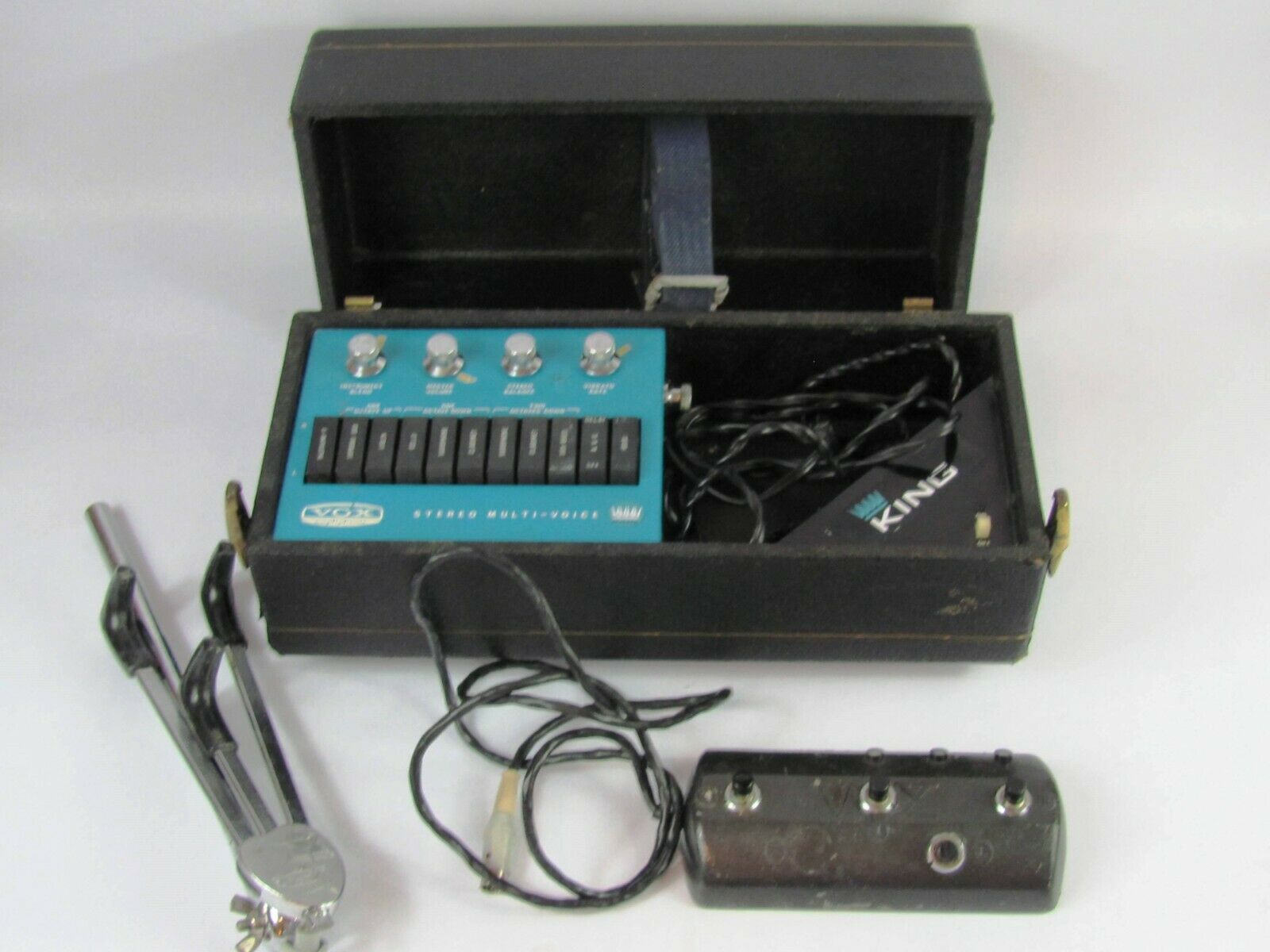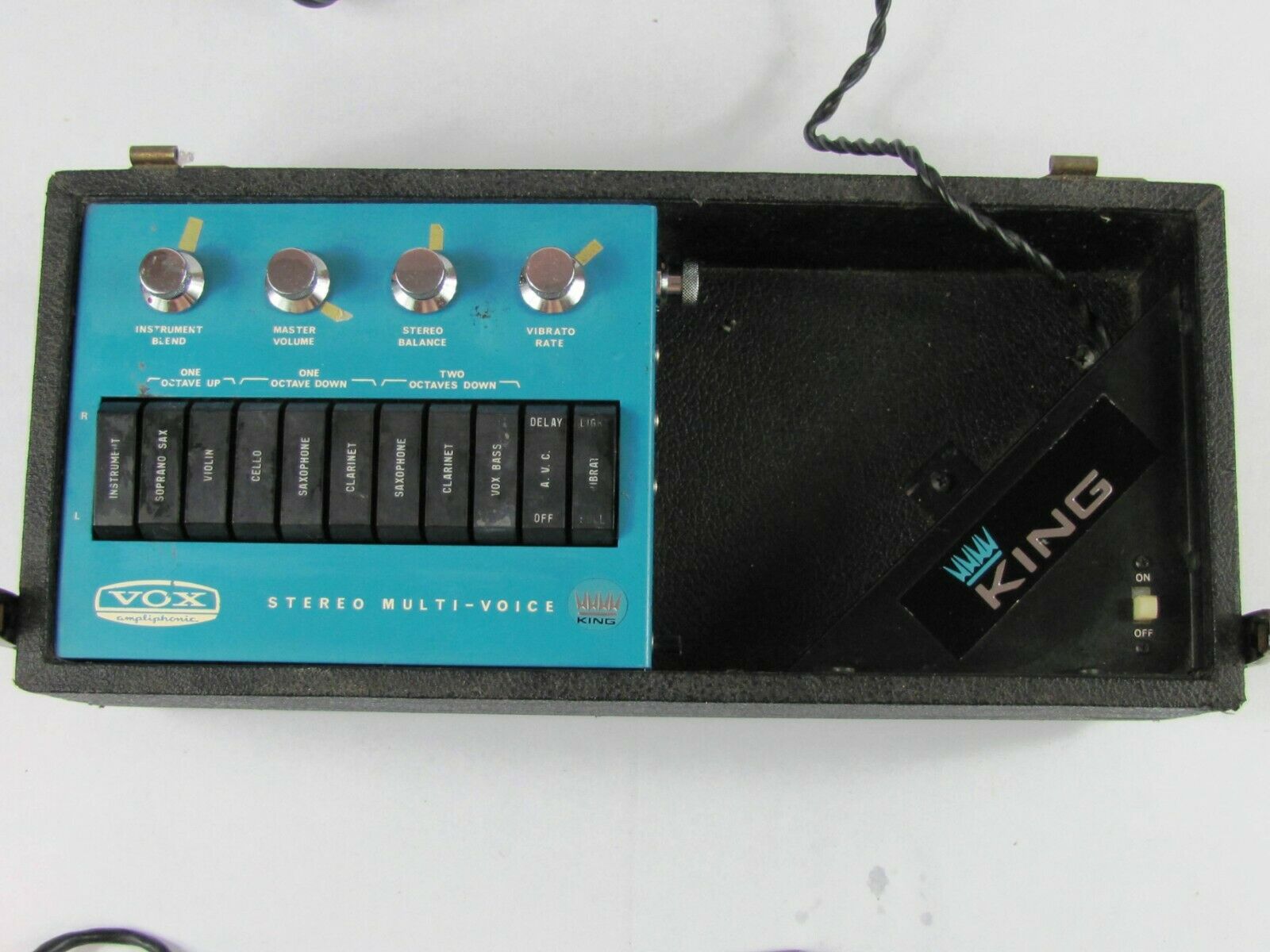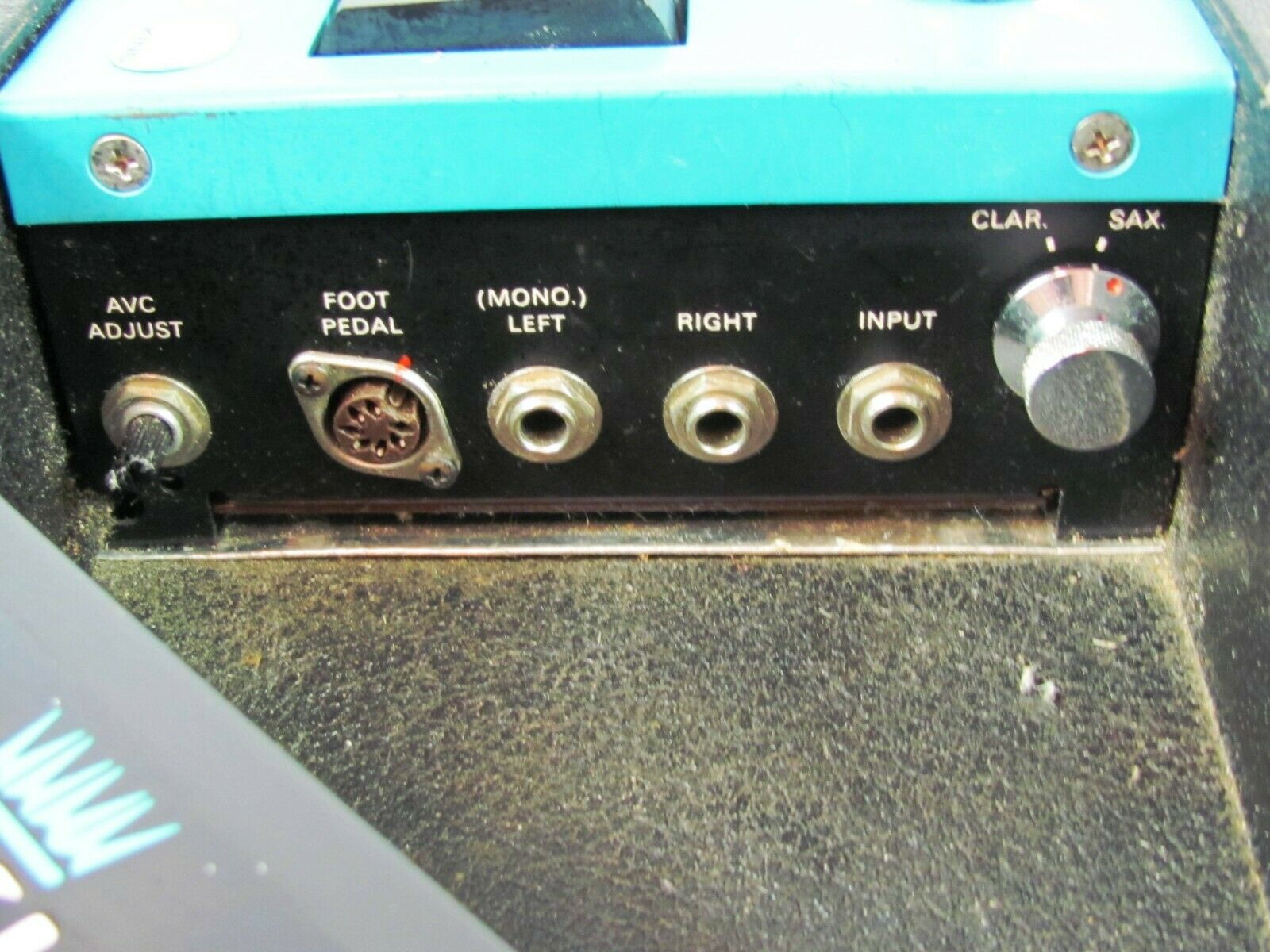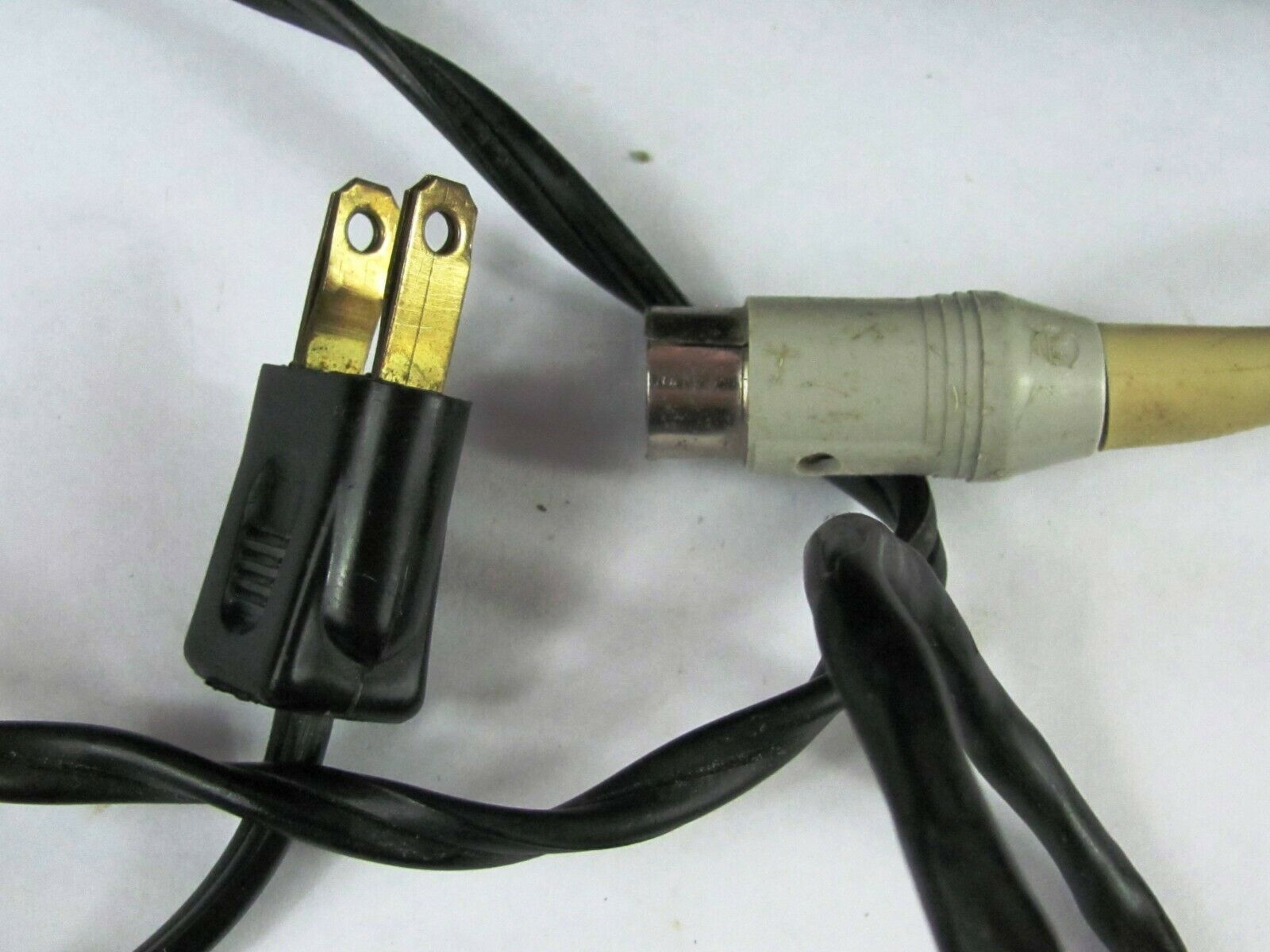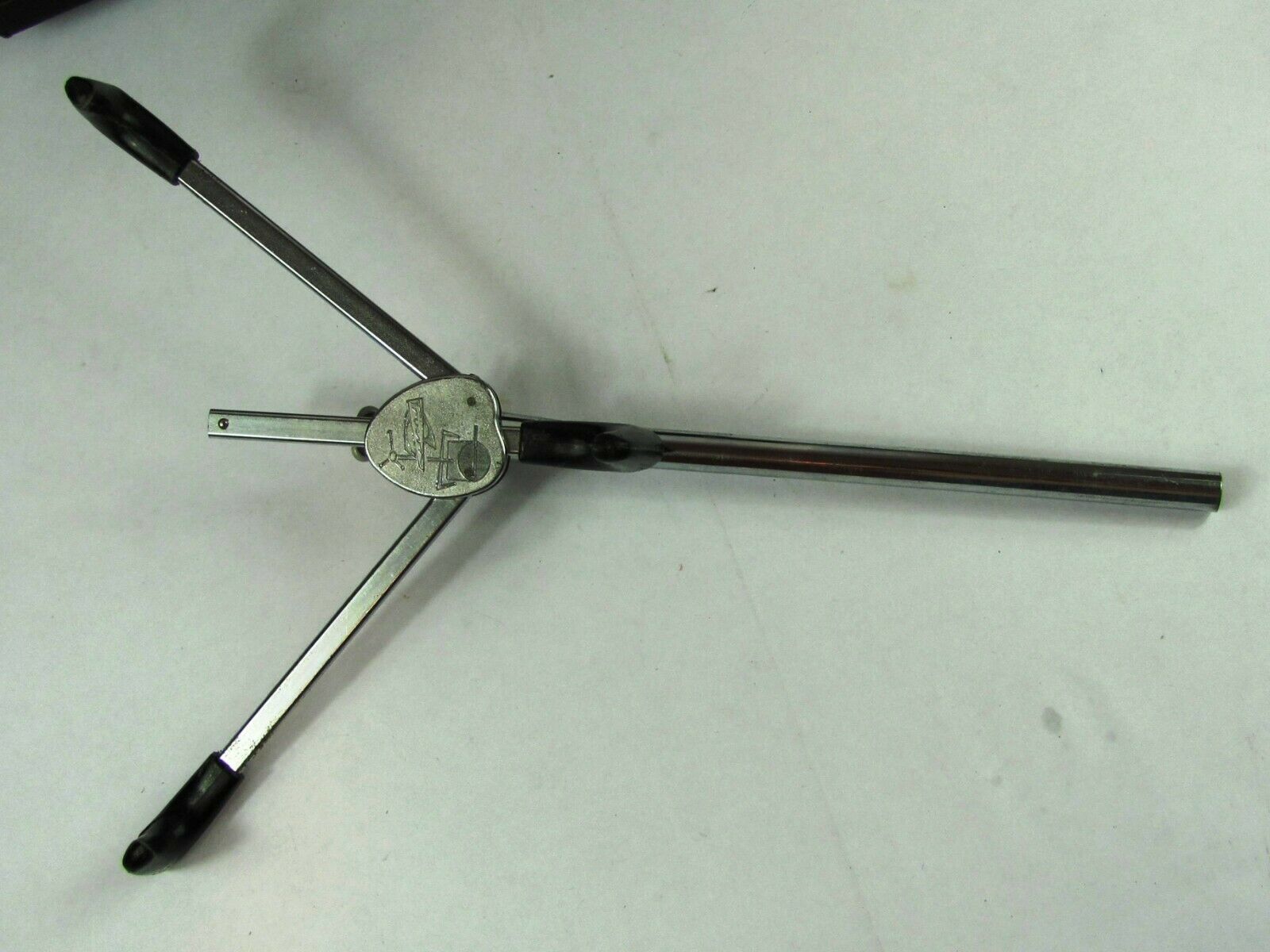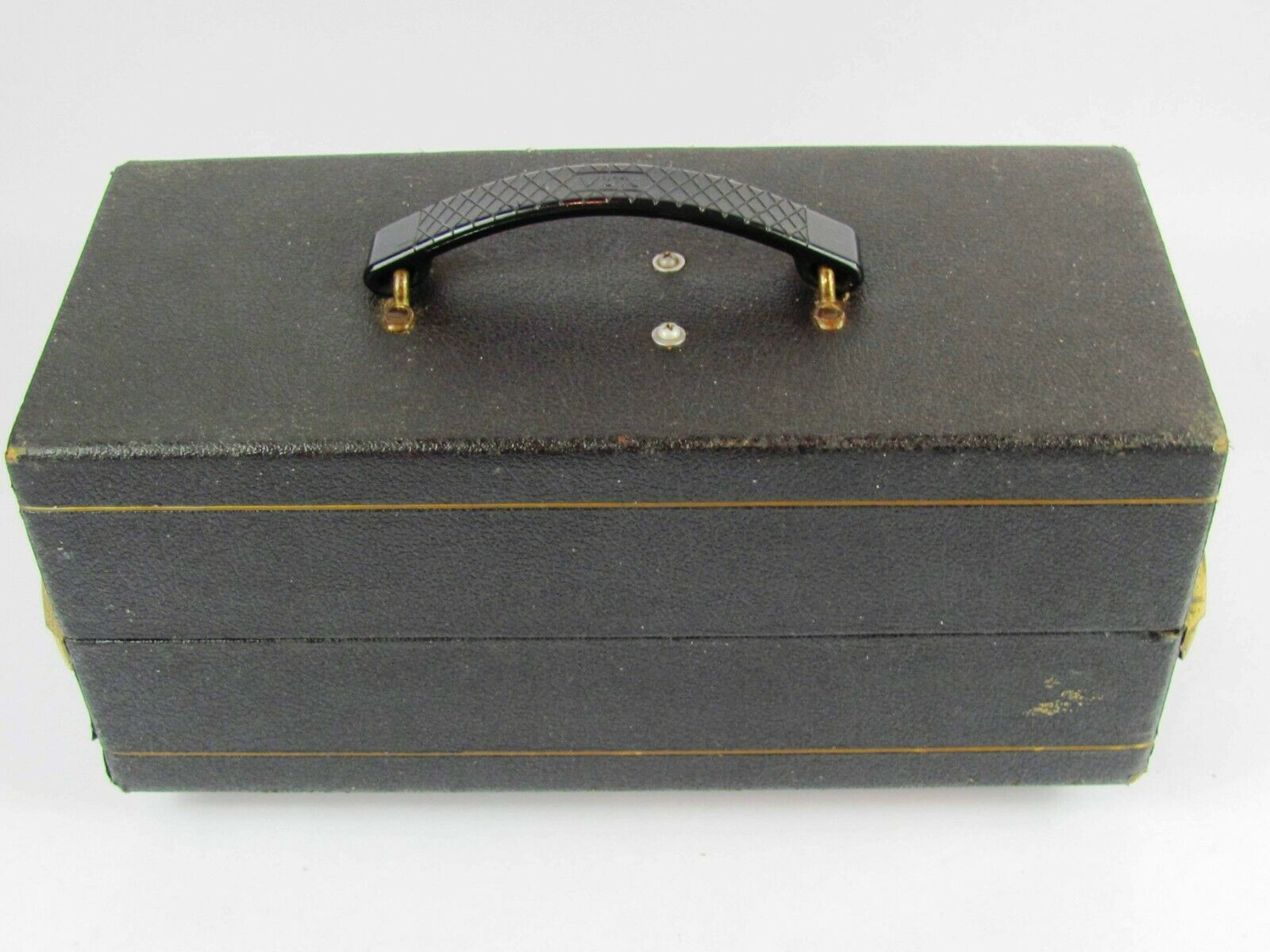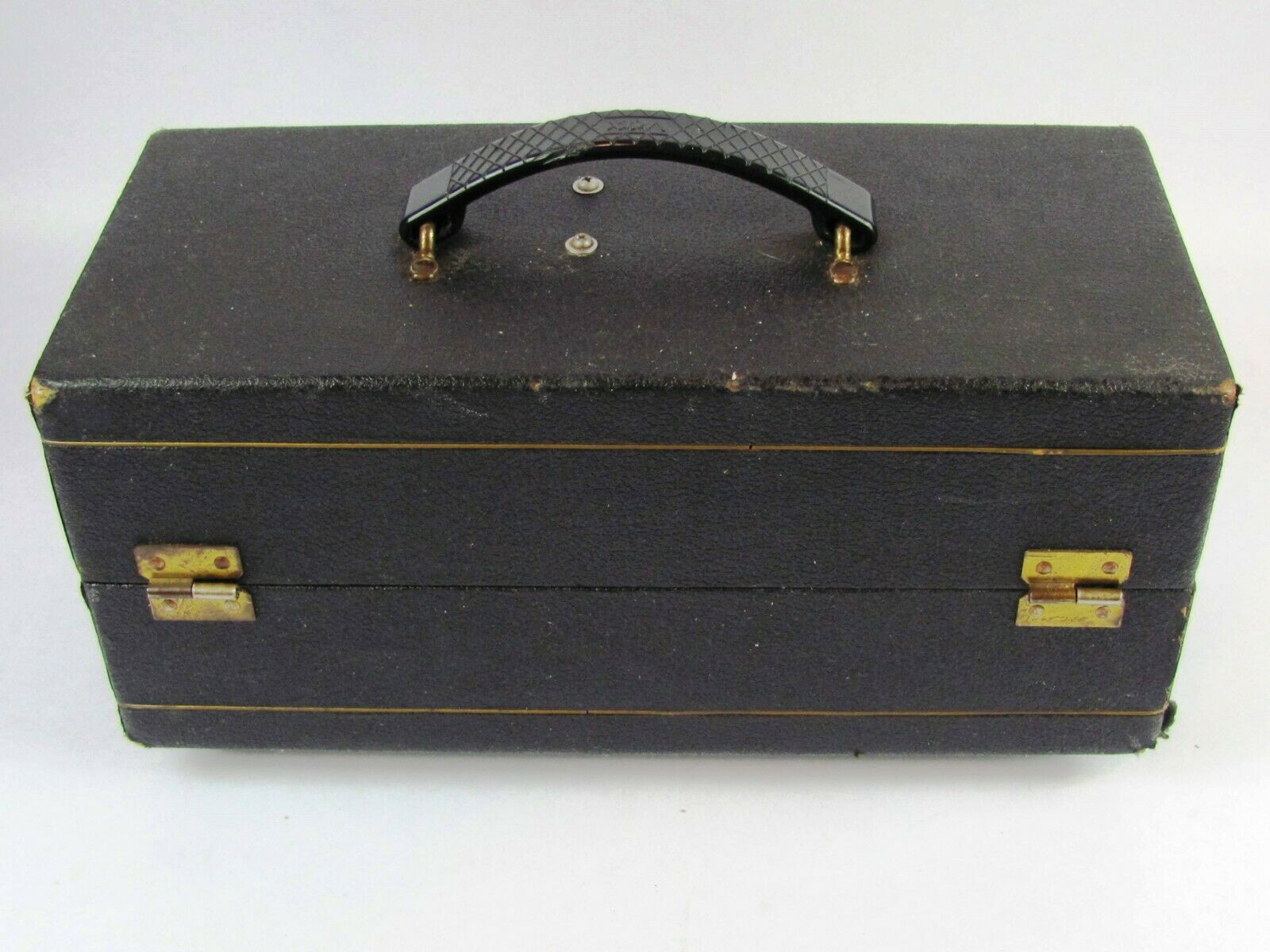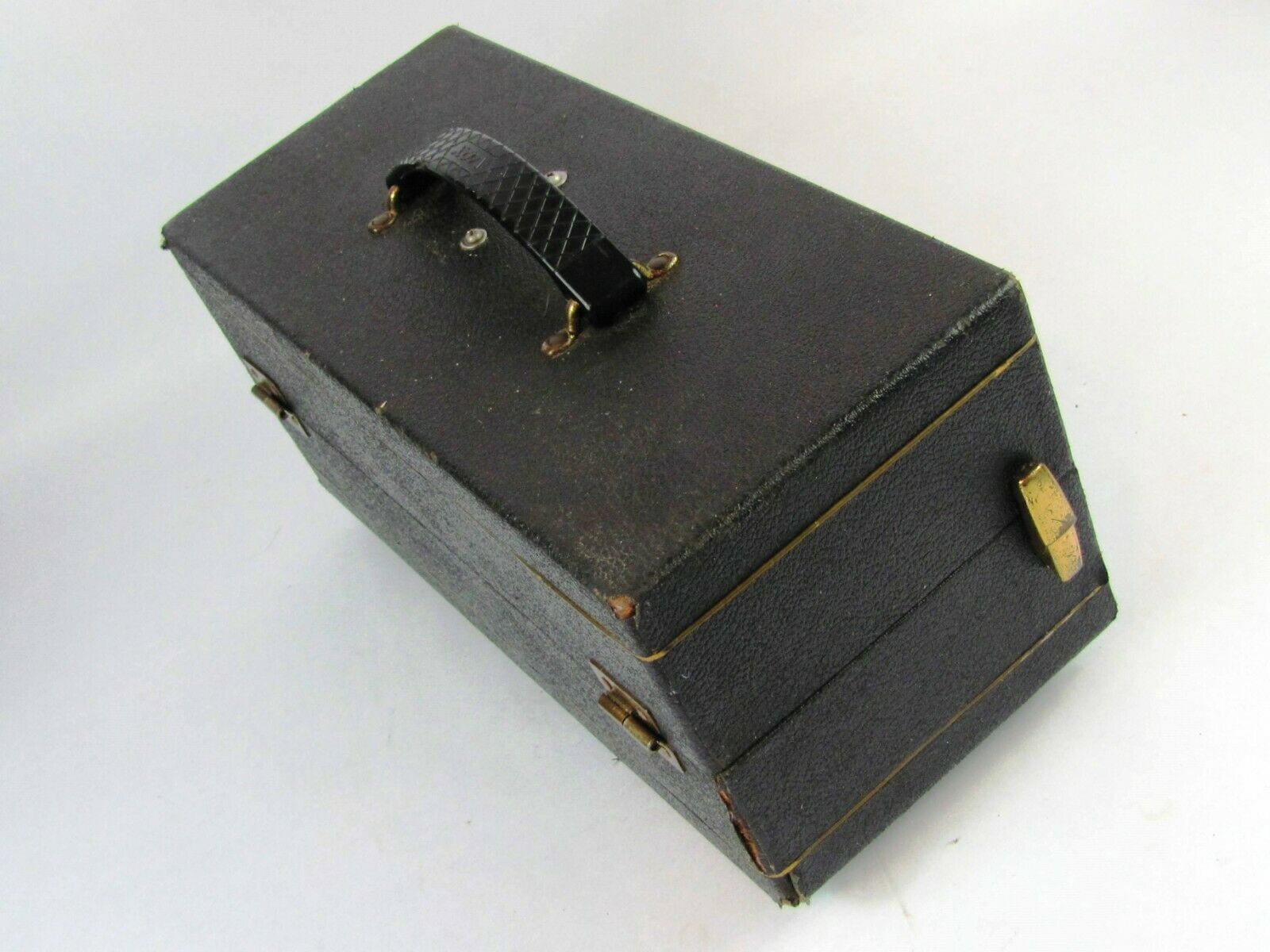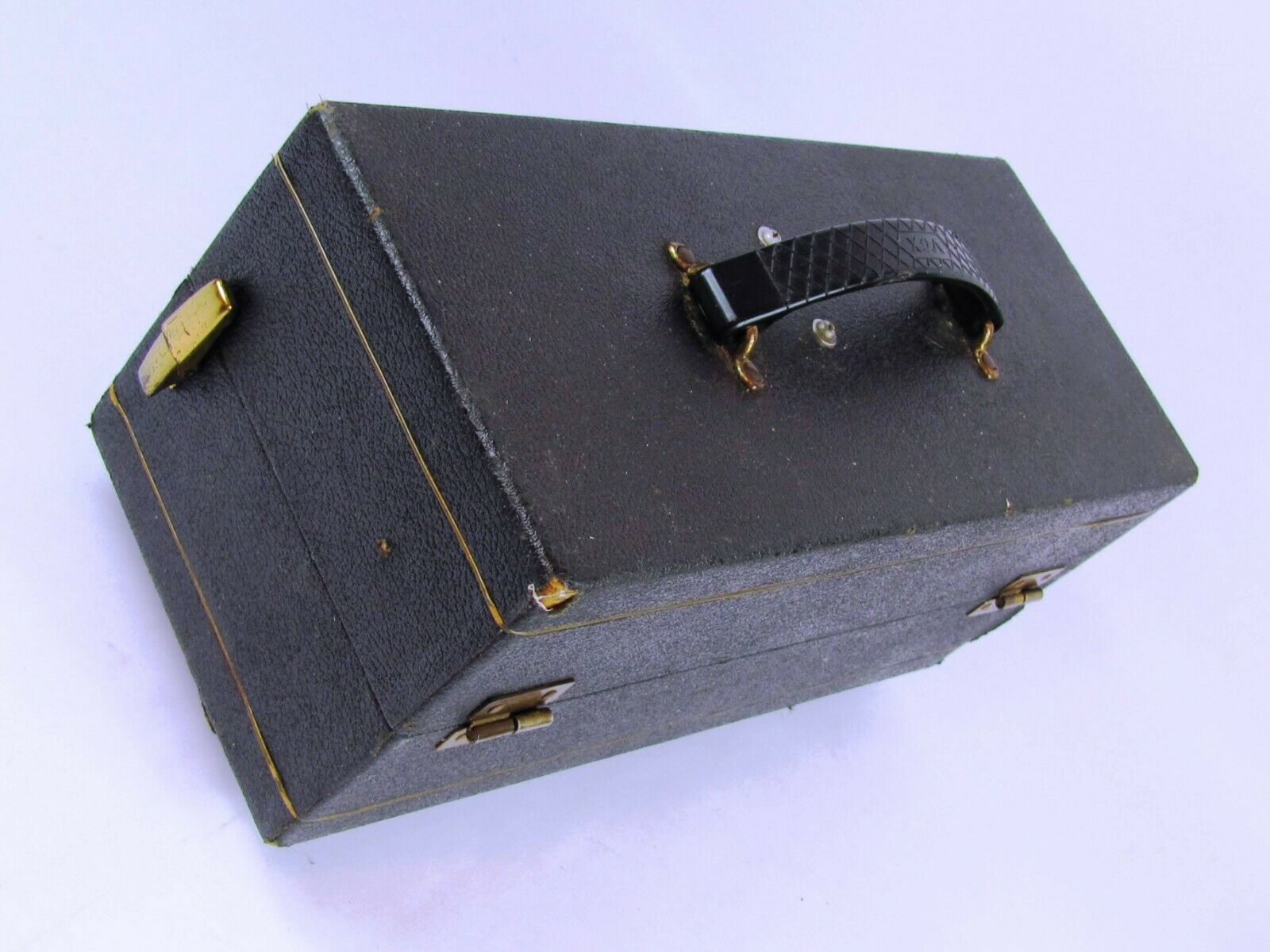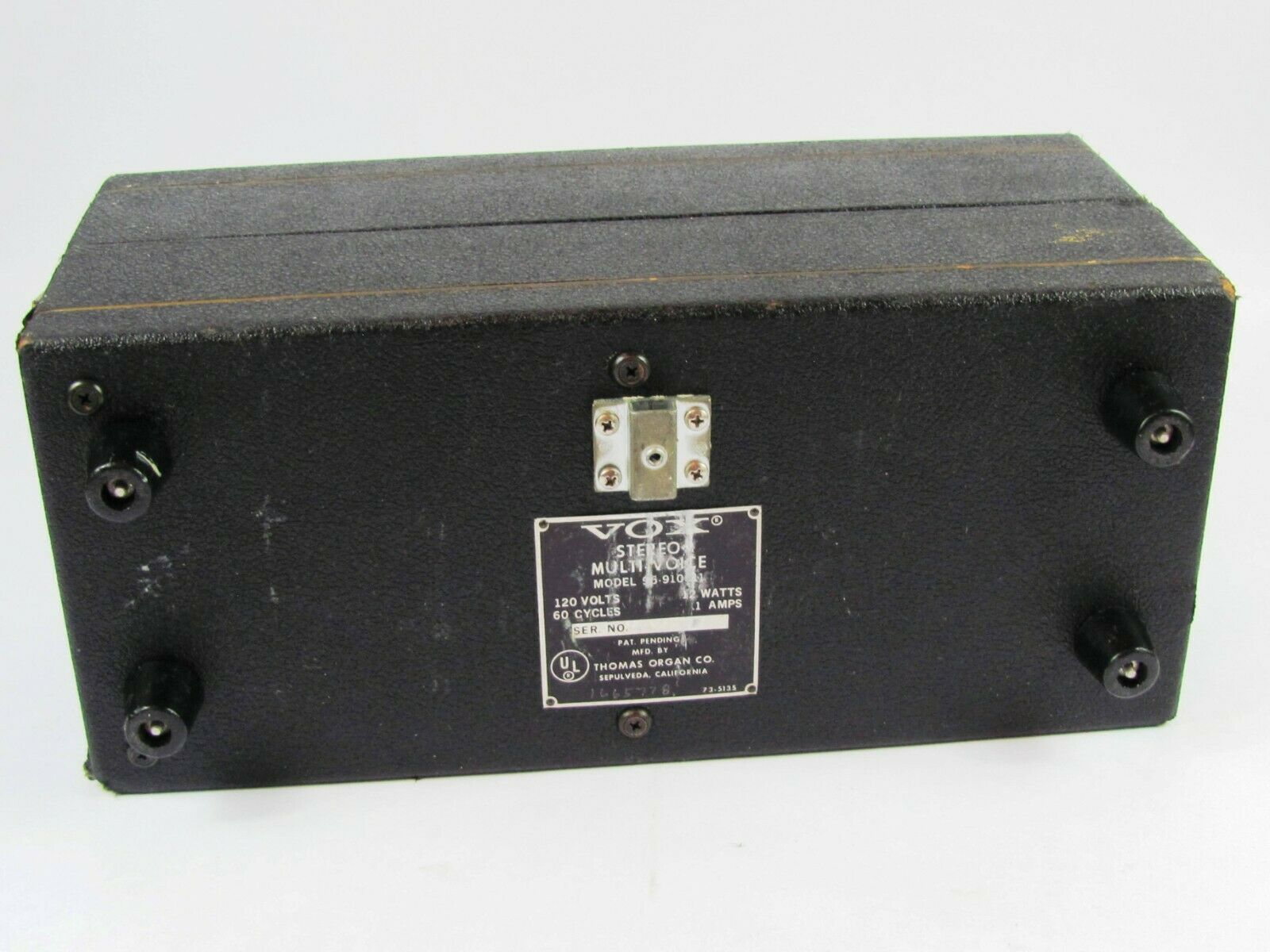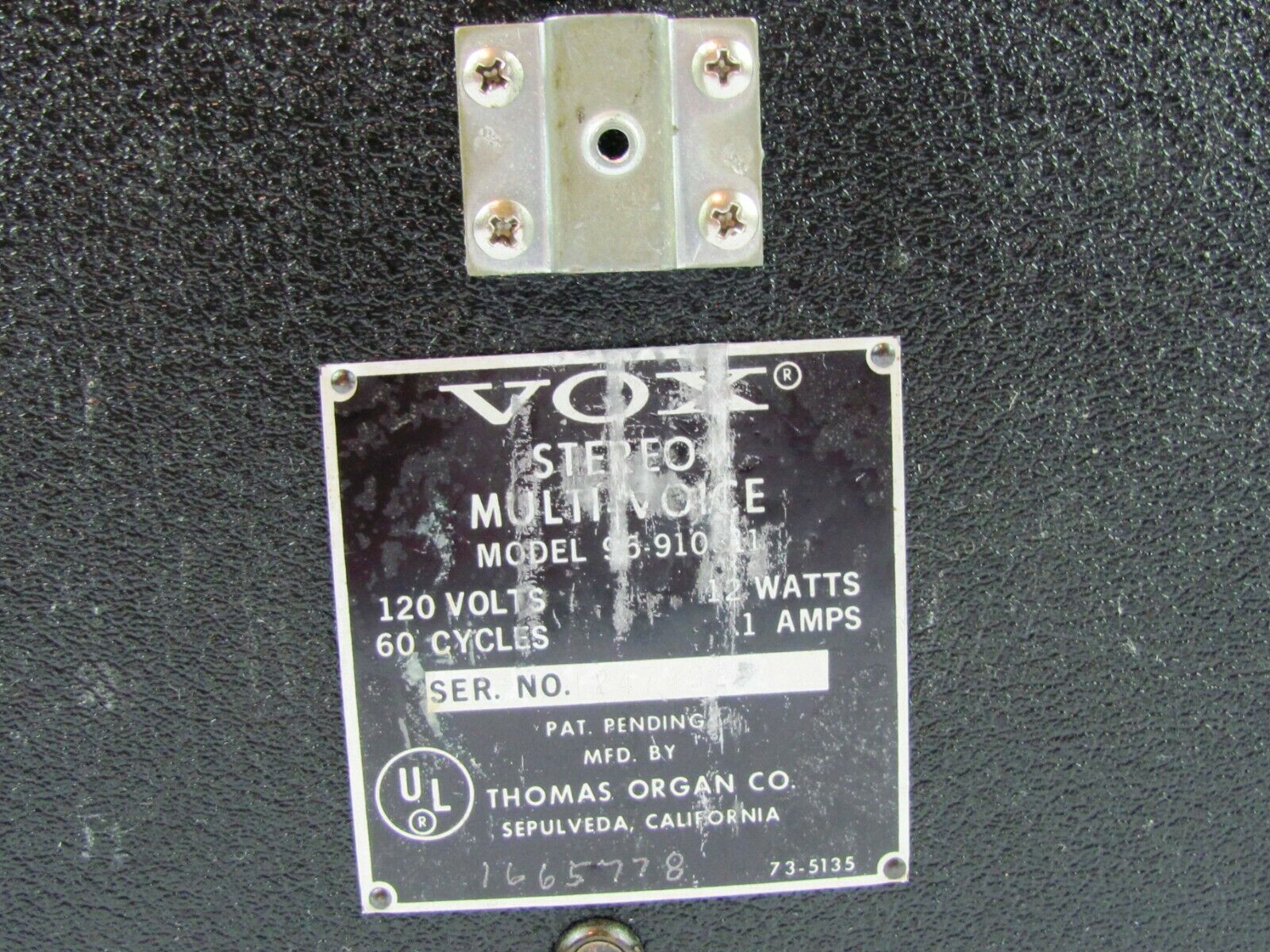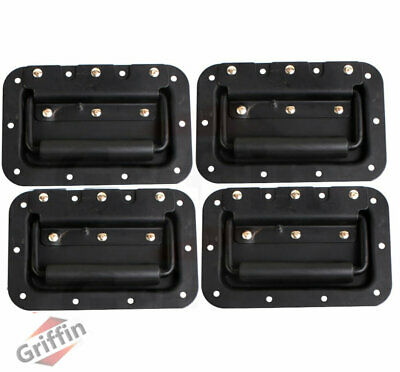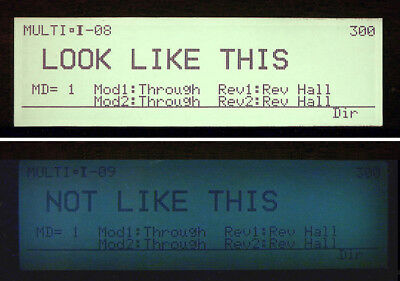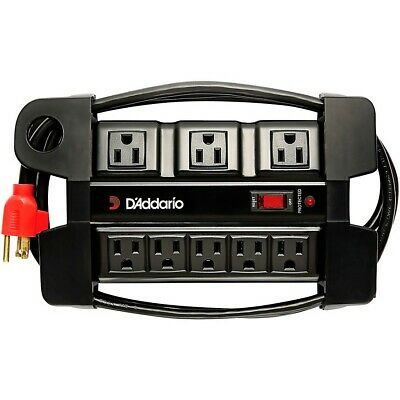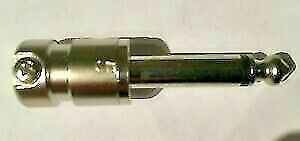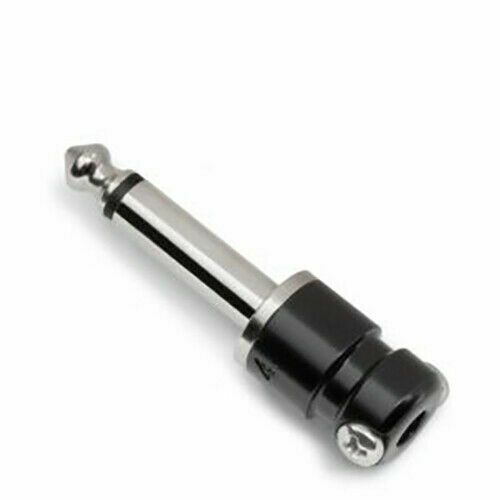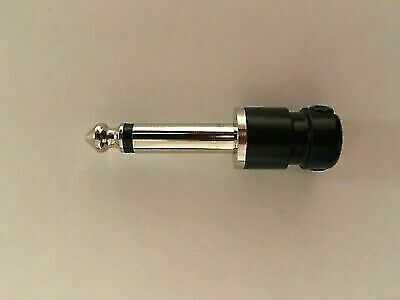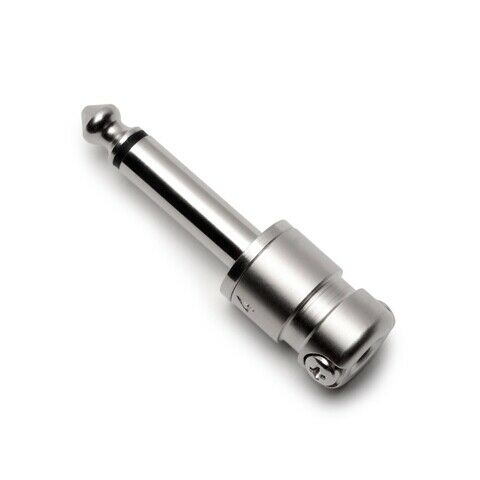-40%
Vox Multi Voice Vintage Music Instruments
$ 400.22
- Description
- Size Guide
Description
Rare Vox Stereo Multi-Voice with original 4 button foot switch. One light is out on the foot switch. The power light still glows as it did over 50 years ago. Untested but confident it will mostly work.As with most vintage equipment more than likely some components will need to be cleaned or replaced to work 100 percent - expect this unit to be no different.
All dials turn freely and switches click and return as they should. May need some internal switch cleaning/deoxit and basic technician work. Shows some wear, but overall very nice condition for age. Great show piece of vintage equipment for stage or home studio for genuine and accurate retro sound. Comes with upper part of a stand to hold it in place at the height you want. Sound investment.
From a Description found on the internet:
A series of
Octavers and Doublers
work like draws on an organ. It can also be pushed into overdrive to achieve somewhat of an octave-fuzz effect. The direction in which the rocker switches are engaged determines whether the corresponding effect is routed to the
left or right outputs
. It also has an awesome
vibrato
switch.
Background on Vox Multi Voice from Vox:
In 1967, looking for new markets, Thomas Organ entered the band instrument business with their "Vox Ampliphonic" line. Vox introduced a line of 66 woodwind and brass instruments with audio pickups, allowing these instruments to be played through a Vox amplifier. But their goal went beyond amplifying band instruments through an amp. Thomas Organ also wished to develop outboard effects devices that would radically modify the tone of reed and brass band instruments just as MRB, fuzz tone, and Repeat Percussion had done for guitar. Vox developed three signal processing products to accomplish this goal: the pocket sized Octavoice I and II and the Stereo Multi-Voice.
The 1968 Vox Ampliphonic catalog described the Stereo Multi Voice as follows: "A revolutionay idea in Music! Vox's Stereo Multi-Voice lets one musician sound like an entire section. Here's how it works: Preset tabs for the octaves and voices that you want. Then with the tap of a foot, change or mix octaves; swing back and forth between different voices. You can make a sax sound like a clarinet or like several musicians playing all at once."
The electronic design of the Stereo Multi -Voice was based on the tone generation circuitry used in Thomas home organs. These organs used twelve individual tone generator circuit cards, one for each tone in the scale. Each of these cards had a "master tone oscillator" circuit that generated the highest pitched tones in the organ. The signal from each of these master tone oscillators was then fed serially through a number of analog frequency "divider" network circuits. Each frequency divider network would drop the frequency of the master tone oscillator by one octave. Through the use of five of these serial frequency divider networks in each of the twelve tone generator circuit cards, the pitches needed to complete a five octave organ were derived.
The Stereo Multi Voice worked on a similar principle. The Multi-Voice was inserted in the line between the instrument and the amplifier. The Stereo Multi-Voice substituted the signal from the brass or reed instrument pickup for the "master tone oscillator" in an electronic organ. The audio output from the instrument was fed through either a single doubler network to raise the pitch an octave, or one or two serial dividers to drop the pitch one or two octaves.
As an example, one could drop the amplified tone of a tenor sax one octave using the Stereo Multi-Voice and make it sound like a baritone sax when played through through an amplifier.
In addition to pitch adjustment, the Stereo Multi-Voice offered eight tone shaping switches to modify the tone of the instrument run through the processor. A four button foot switch similar to those supplied with Vox amps was also included for remote switching of effects.
The Stereo Multi-Voice not only worked with amplified woodwind and brass instruments. It also gained favor with guitarists.
Returns
Always a 30 day domestic return policy.
If you need to return an item for any reason please contact us in advance as a first step, please do not initiate a return without contacting us first. We will be prompt in replying.
Feedback
If there is a problem with your purchase please PLEASE allow us the chance to resolve the issue before leaving negative feedback and to earn your highest feedback ratings.
Descriptions
All attempts are made to describe and photograph items as accurately as possible to earn your highest feedback ratings. Please look closely at the photos as they are part of the description.
